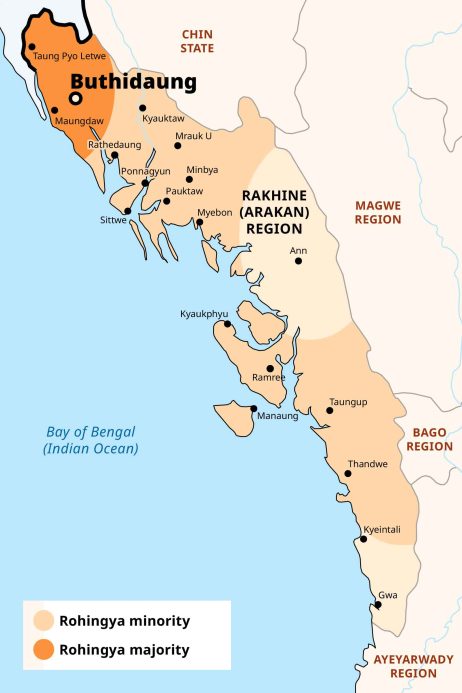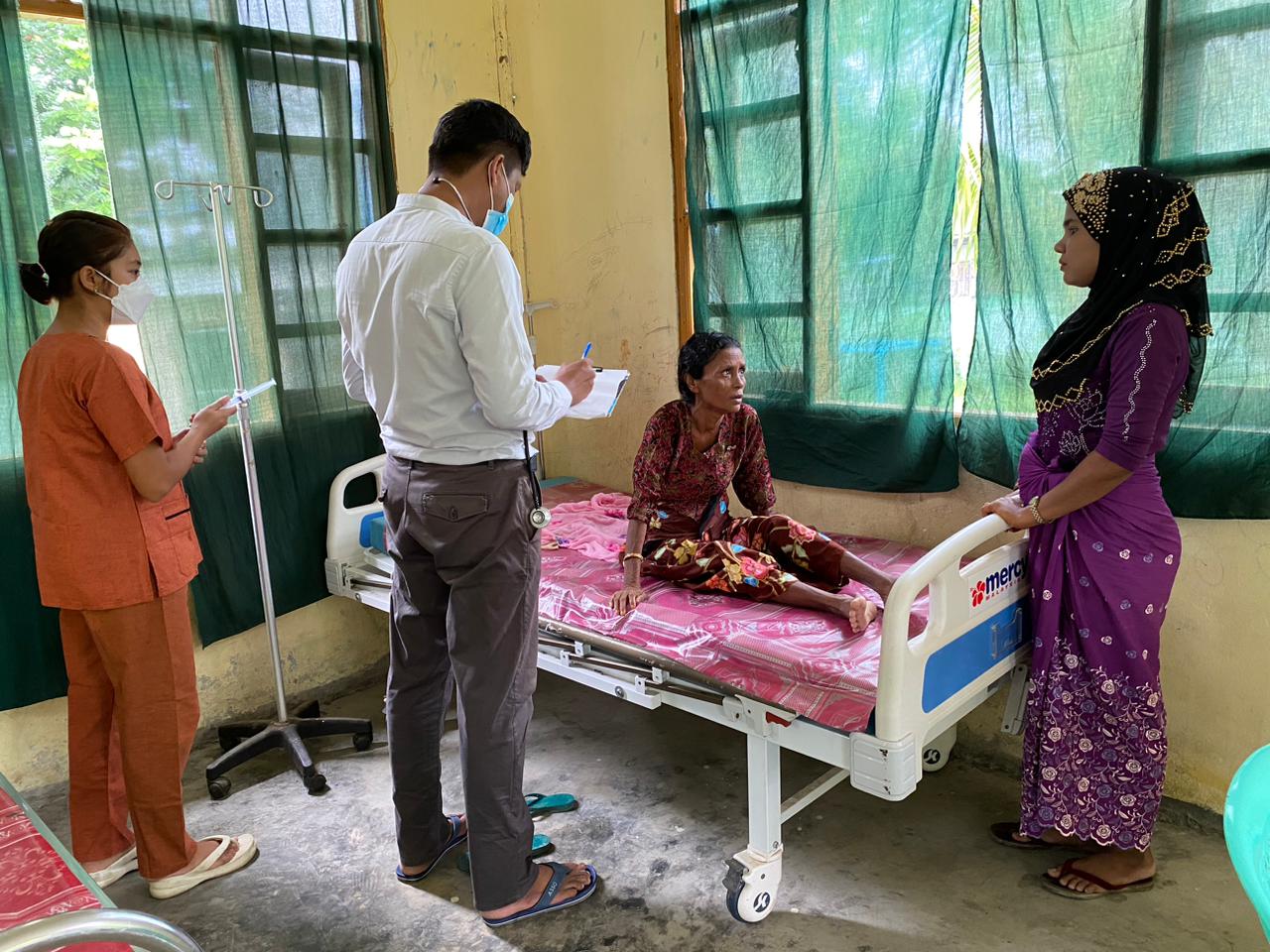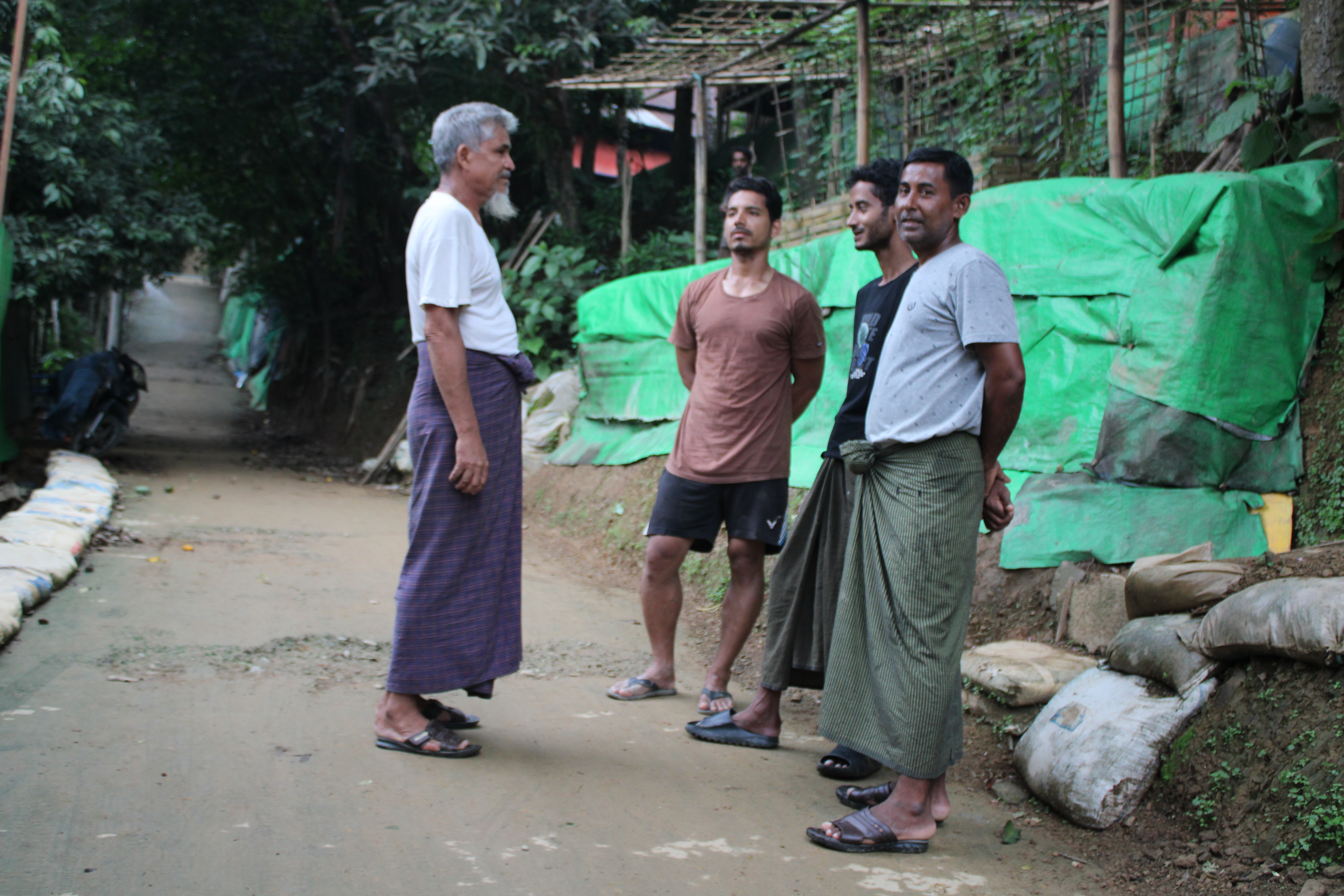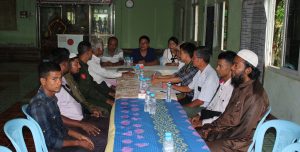The Arakan Army (AA) and its political wing, the United League of Arakan (ULA), have embarked on the ambitious and arduous task of erecting an “inclusive administration” in the areas captured from the military regime in Rakhine State of western Myanmar.
The plan has triggered speculation and divergent views about the future of the Rohingya Muslims, considered the most persecuted community in the world.
The AA has seized most of central and northern Rakhine State as well as Paletwa in southern Chin State from the State Administration Council (SAC) of the Myanmar military. The seeds for an “inclusive administration” engaging all communities in the governance of liberated territories were sowed by the AA and ULA in 2019 when the Arakan People’s Authority (APA), now called the Arakan People’s Government, was set up.

In an interview with The Diplomat, Twan Mrat Naing, supremo of the AA and ULA, revealed that the objective of the plan is to set up a welfare-oriented “centralized unitary government” followed by delegation of powers to different levels of government at a later stage.
During my travels in southern Chin State and Rakhine State in June and July, I had informal discussions and interviews with AA and ULA functionaries, who shared with me their plans for the Arakan People’s Government. These include creation of an administrative apparatus by amalgamating the structures of Naypyidaw with new features depending upon the situation in each township. I saw many departments such as the village administrative committees, health centers, police and agriculture departments, the humanitarian and development coordination office (HDCO), and tax and customs offices functioning across Paletwa, Kyauktaw, Ponnagyun, Minbya, and Rathedaung. The structure is organized like a pyramid, with enormous authority vested in the regional military commands.
The ULA’s Rationale for Engaging Rohingya Muslims

A Rohingya woman being treated at a health center established by the ULA in Myanmar’s Rakhine State. Photo by Rajeev Bhattacharyya.
The ULA believes that communal harmony is vital for peace and stability in Arakan, a region that has been rocked repeatedly by communal violence between the majority Rakhine Buddhists and the Rohingya since 1942. Among the bigger challenges before the ULA is putting an end to the decades of discrimination and persecution of the Rohingya, who have been denied citizenship and suffer severe restrictions on their freedom of movement.
According to estimates of members of the Rohingya community and ULA functionaries, the current Rohingya population in southern Chin State and Rakhine State is around 0.9–1.1 million with the largest numbers concentrated in Maungdaw district bordering Bangladesh where the community is in a majority, and the least at Paletwa in southern Chin State, with just 81 people living there.
Kyaw Zaw Khing, political commissar of Kyauktaw, told The Diplomat on June 17 that the ULA’s “objective is to establish peace, which we consider as essential for stability.”
The ULA is trying to include “all communities in the administration, including the Muslims [Rohingya] who are eager to cooperate with us,” he said, adding that a “Muslim Affairs Committee has been set up in addition to an Ethnic Affairs Committee to include all ethnic minorities such as the Khumi, Mro, Diangnet, and Hindu.”
Kyaw Zaw Khing explained that the administration’s focus is on “community engagement” through sports events and festivals to foster social cohesion among the Rohingya, Rakhine Buddhists, and other communities. This was considered crucial given the “social divide” between the Rohingya and the other communities, which he said exists in varying degrees in the different townships and is most intense in Maungdaw and Buthidaung.
As a demonstration of its goodwill and increasing authority, the ULA has removed restrictions on travel for the Rohingya in central Rakhine State and Paletwa, some members of the Rohingya community told The Diplomat. This has allowed them to access services, including healthcare at some of the medical establishments set up by ULA.
Besides fostering peace, the aim of the ULA (and AA) also seeks to leverage its efforts to gain global recognition as a key stakeholder in Rakhine State. This is also a tactic to strengthen their legitimacy and authority in Arakan. Discriminatory policies similar to those of Naypyidaw could nullify the possibility of receiving support from international agencies, especially funds for the rehabilitation of hundreds of thousands of internally displaced persons, including a large chunk of the Rohingya.
From my interviews with a section of the Rohingya inhabitants in different townships, it was evident that they do not have a unanimous perspective of their conflict either with the majority Rakhine Buddhists or the military regime. In terms of their responses to ULA policies, the Rohingya can be broadly categorized into three groups – those who welcome its policies, those who feel compelled to do so, and those who could be hostile.
Rohingya in North Arakan Welcome ULA Policies

Members of the Rohingya community at Paletwa in Myanmar’s Chin State. Photo by Rajeev Bhattacharyya.
The Rohingya at Paletwa in southern Chin State and central Rakhine townships of Kyauktaw, Ponnagyun, and Minbya have warmly welcomed the ULA’s plan for an “inclusive administration.” They are engaging in different ULA-formed committees in villages and towns, and some are being trained as police personnel and health workers. Preparations were also on to include the Rohingya in the departments of agriculture and HDCO that are tasked with resettling the IDPs.
Minbya is a township with 36,235 Rohingya inhabitants across 15 villages. When I reached the township, I met two Rohingya members of the newly established Islam Council. They were attending a ULA-organized meeting with members of all communities for fine-tuning the expansion of the agriculture department and police, and the resettlement of 60-odd IDPs.
Haji Sin Min, chairman of the Islam Council, spoke his mind on a range of issues concerning the Rohingya in Arakan. “There are differences and similarities between us, the Rohingya in Minbya, and the Rohingya of Buthidaung and Maungdaw,” he said, adding that the relationship of the Minbya Rohingya “with Rakhine Buddhists and other ethnic communities has always been cordial.”
“All Rohingya suffered at the hands of the previous Naypyidaw regime,” he pointed out, expressing hope for a better future for the Rohingya under the ULA.
After the AA liberated Minbya township in the latter half of March, “restrictions on the movement of Rohingya were lifted. Two hundred members of the Rohingya community have been included in committees set up by ULA, Haji Sin Min said.
Rohingya settlements remained isolated from each other owing to the restriction on their movement by Naypyidaw. Some Rohingya habitats in Kyauktaw and Ponnagyun faced atrocities as well, such as the burning of houses and illegal detentions during the military’s crackdown in 2012 and the “clearance operations” in 2017, decried by the United Nations’ human rights chief as a genocide.
Rohingya inhabitants from these areas also revealed that the terror groups – the Arakan Rohingya Salvation Army (ARSA) and Rohingya Solidarity Organization (RSO) – did not have a presence in their areas. Nor did they recruit cadres from inhabitants in these townships.
“We Are Compelled to be Optimistic”
Unlike the Rohingya in the townships mentioned above, a section of the community in Buthidaung and Rathedaung appears to be cautiously hopeful about the ULA’s plan to engage them in governance. The AA captured this region from the military in campaigns between March and May.
According to ULA functionaries, almost two-thirds of the total Rohingya population in Myanmar’s Arakan region is spread across the townships of Rathedaung, Buthidaung, and Maungdaw. This region bore the brunt of the military’s “clearance operations” in 2017, compelling over 700,000 Rohingya inhabitants to relocate to Bangladesh.
It was also in this region that the terror group ARSA carved out a base and recruited thousands of cadres to fight against the military. However, ARSA’s armed movement against the military also involved threats and murders of those Rohingya who questioned and opposed some of its activities such as the forcible collection of funds. According to a group of four Rohingya clerics and teachers – Maulana Abdul Goni, Mohammad Noor, Abul Baser, and Ataullah – interviewed on June 22 in Buthidaung, ARSA killed some 80-100 people.
Of the four, Ataullah, who teaches at a madrassa in Rathedaung, was the most vocal critic of ARSA. “ARSA turned out to be the biggest enemy of the Rohingya community. It has now joined hands with the military that committed the worst atrocities on our people. Of the 30,000 Rohingya living in Buthidaung, almost 70 percent became refugees in Bangladesh in 2017,” he claimed.
Explaining the reasons for a section of his community supporting the policies of the ULA, Ataullah pointed to the organization’s assurances to remove restrictions and discriminatory policies against the Rohingya. All communities would enjoy equal rights, including freedom of movement for the Rohingya, the ULA has announced.
“It is but natural for us to be hopeful with such announcements. At the same time, many among us are unsure about the future,” said Ataullah, who had traveled from his home in Rathedaung for meetings with the ULA in Buthidaung.
Echoing Ataullah’s views was an elderly man, Khaliluddin, from the Rohingya community at an IDP camp in Buthidaung, who was hopeful of a better future for his community in Arakan without the military. However, he was also concerned about the consequences of opposing the ULA’s policies. “Not cooperating with the ULA could be harmful to our interests. Our immediate objective is to return to our homes which will not be feasible without the assistance and approval of the ULA and AA,” he said.
‘Hostile Rohingya’ in Buthidaung and Maungdaw
On October 11, the AA said that the decapitated bodies of two Rakhine Buddhists, U San Shwe Maung and U Maung Mya Aung, were found buried near the Rohingya-inhabited village of Gone Nar in Buthidaung. The duo had reportedly gone to cut bamboo in the Mayu mountains but were allegedly abducted and killed by ARSA.
This incident was preceded by another from the Mro-inhabited village of Kaing Gyi in Maungdaw, where four members of a family were reported missing after they went fishing in a creek. Unnamed local inhabitants were quoted as alleging that ARSA had arrested the four.
These incidents could not be independently verified, but they are an indication of the ARSA presence in Buthidaung and Maungdaw townships, despite the fact that AA has captured Buthidaung and much of Maungdaw (although the military still exercises control over some zones along the border with Bangladesh).
It appears that the ULA and AA are yet to spread their roots and establish a firm grip in Buthidaung and the areas they control in Maungdaw. The current situation has offered ARSA the space to continue its campaign against the AA and retain support in some pockets. There are unconfirmed reports that some Rohingya youth had voluntarily joined the military-sponsored militia to fight the AA.
The Rohingya teachers and clerics I spoke to confirmed to me that ARSA had support in some Rohingya villages. “ARSA has enlisted support in Buthidaung among some sections, which could explain the participation of people from far-off villages in the rally against AA,” Mohammad Noor, a teacher at a school in Rathedaung, told The Diplomat. Currently, “its support base is mostly confined to Maungdaw and the region bordering Bangladesh,” he claimed.
The AA had imposed a curfew in Buthidaung town and the adjoining areas. The outfit has set up check posts inside the town and along the routes leading to other towns as also along the banks of the Kaladan, Mayu, and Kalar Panzurn Chaung rivers.
A middle-rung AA functionary believes that hardcore ARSA sympathizers, whom he termed the “hostile Rohingya,” are present in the liberated areas. He was of the view that the ULA’s plan to engage all communities in governance could face a challenge from ARSA supporters in Buthidaung and Maungdaw.
In addition to the constant danger of airstrikes that could delay the implementation of the plan, the ULA is also hamstrung by a dearth of financial resources. Reconciliation among the different communities will vary according to the social, economic, and political conditions and the prevailing relationships in a particular area, which means that the process could be tougher in the townships of Buthidaung and Maungdaw.
So, the outcome of ULA’s plan for an “inclusive administration” remains unclear but it will certainly impact the future of inhabitants across all communities in Myanmar’s Arakan.

































